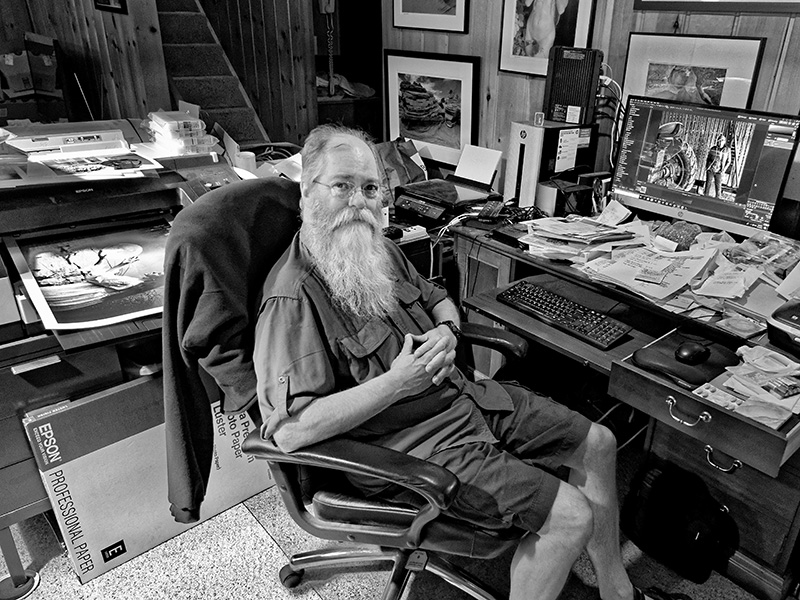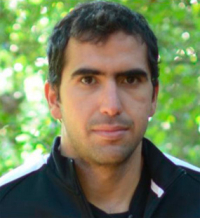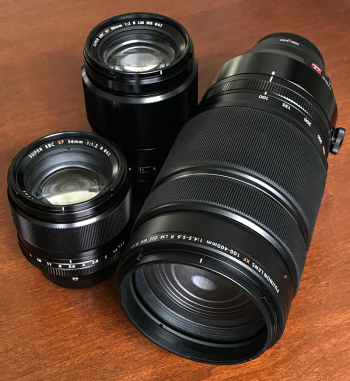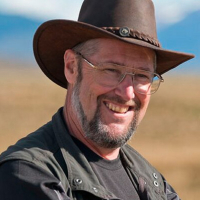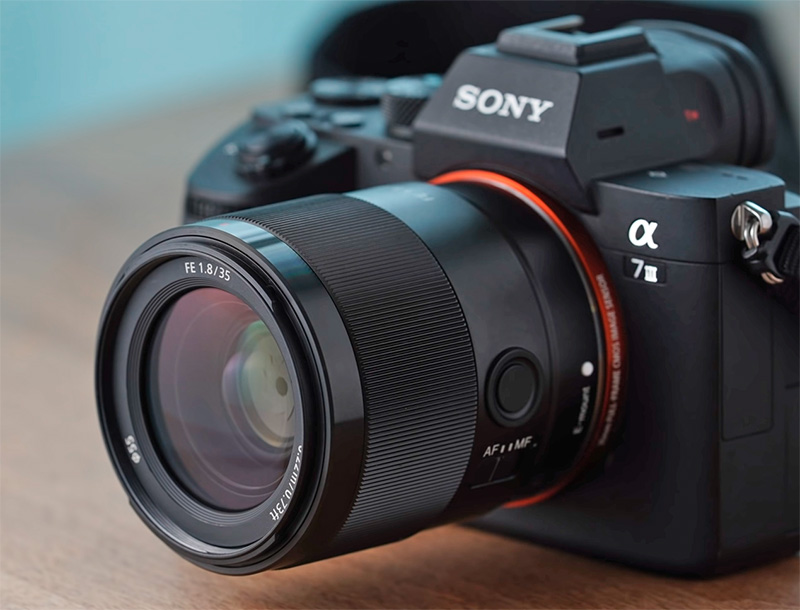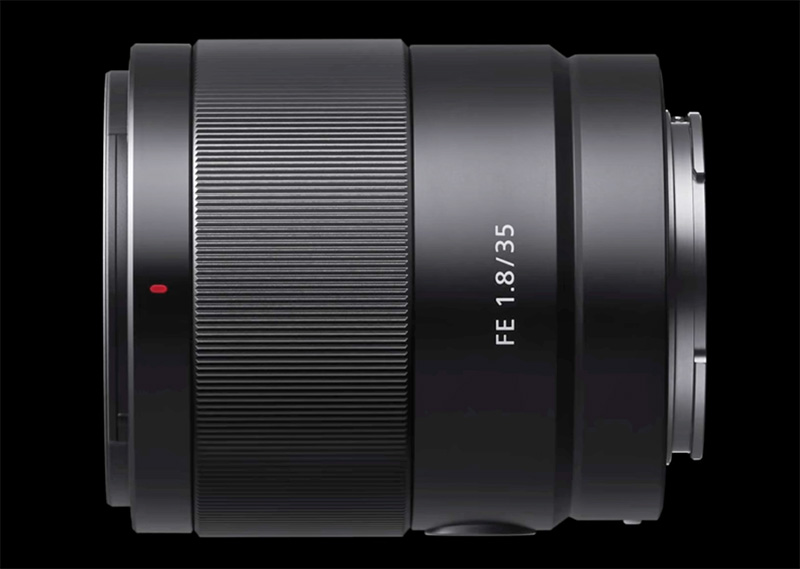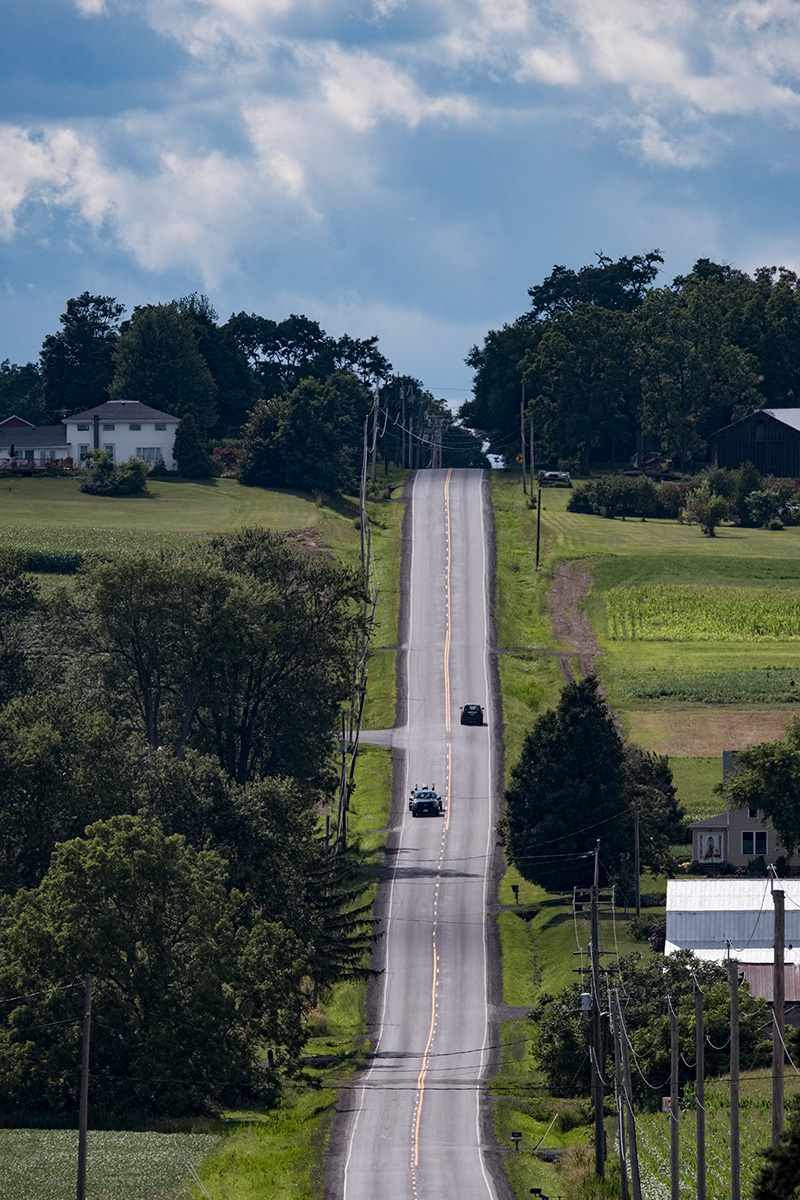
I went out for a few hours on Saturday with just the X-H1 and the Fujinon XF 100–400mm (150–600mm-e, where "-e" means angle-of-view equivalent) and had a good time. It was the first time I've used the lens, and I must admit it felt a little disorienting at first; I felt like a trained volleyball player who is suddenly asked to play badminton. I'm not a long telephoto kind of guy naturally. In fact I have never used a 600mm or 600mm-e lens before, ever. Canon sent me a 300mm when I reviewed the then-new EOS system* in 1991 or so, and I did shoot with that. For two hours or so. My experience with very long lenses is, shall we say, minimal.
It's quite different, shooting with very long lenses. At least there are more distant pictures up here. The last time I used a long telephoto, in the later 1990s, it was a Nikkor 180mm ƒ/2.8** (a famous lens—they still make one) on a film Nikon, and on the afternoon I used it I was trying to take pictures around Chicagoland. And nothing you can see is far away in Chicagoland***. So I joked (in the subsequent magazine article) that there is nothing far enough away to take pictures of with a 180mm—I said even the moon was too close, because the moon filled too much of the frame with the 180mm.
Ha ha, but that's kind of the way I feel with long teles.
So I fell back into "testing" mode. "Testing" is always easier than taking pictures! The thing I was really looking at was the image stabilization. Naturally you'd find out more about the sharpness potential of the lens with a sturdy tripod and Iridient X Transformer (I did use the latter), but I'm unlikely to have the patience for a tripod except in specific situations, so I wanted to know what the lens would be like to hand-hold. The Fuji 100–400mm ($1,899) has OIS, optical image stabilization, built into the lens, and apparently turning it on or off also turns the in-body image stabilization (IBIS) on and off; when both are on, they work in concert. And boy, do they ever work.
This isn't so surprising:
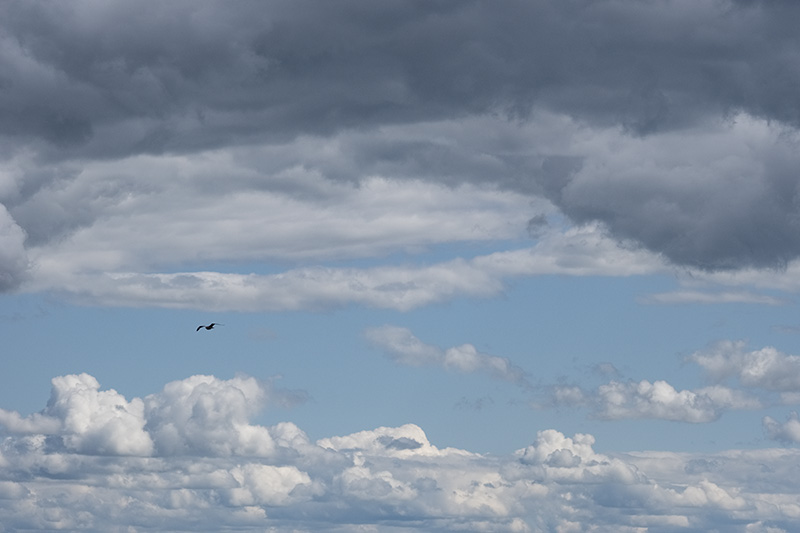
This is the lens at its short end, 100mm (150mm-e), and the subject (the seagull, that would be) is gliding along lazily, and the shutter speed was a whipcrack 1/1400th of a second.
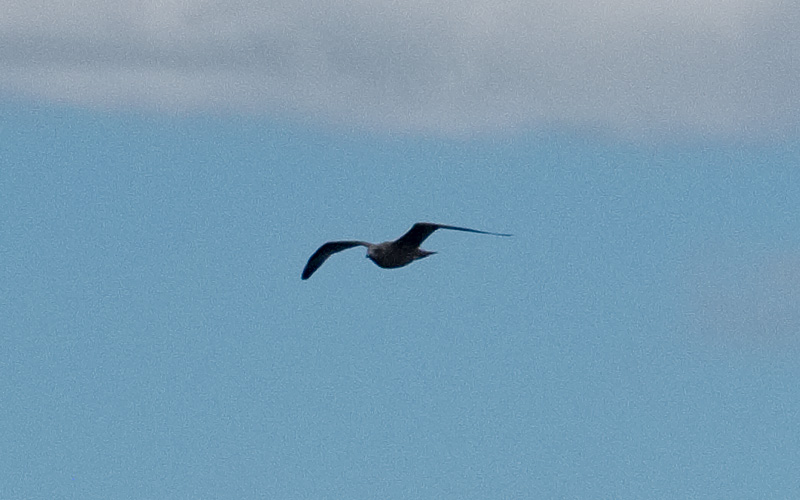
This detail should be at 100% on your monitor after you click on it to open it. Bear in mind our blog software dulls image sharpness slightly but noticeably.
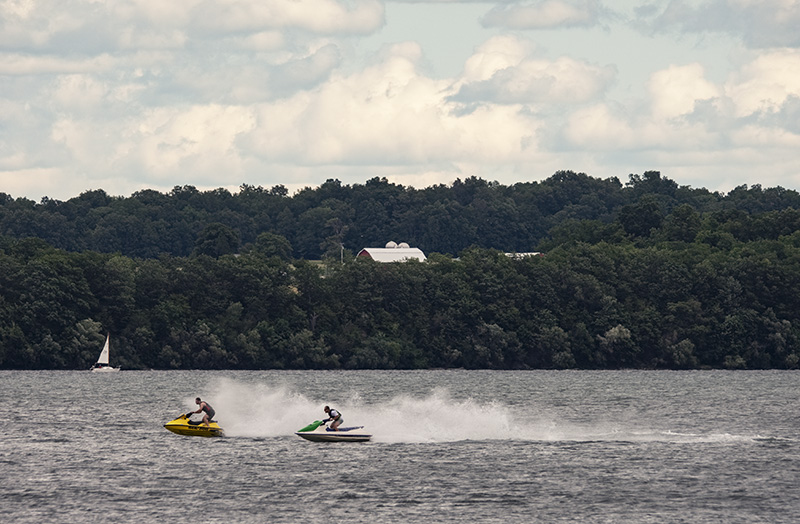
Here's a considerably tougher test. These gents were seemingly about half a mile away, moving fast. (Sorry I didn't get the color right on this, but oh well.) [UPDATE: I was correcting the JPEG in this case and discovered that the color setting was to "Classic Chrome," which explains the subdued colors here. I'm just getting to know the camera again and was not aware of all the previous owner's settings.]
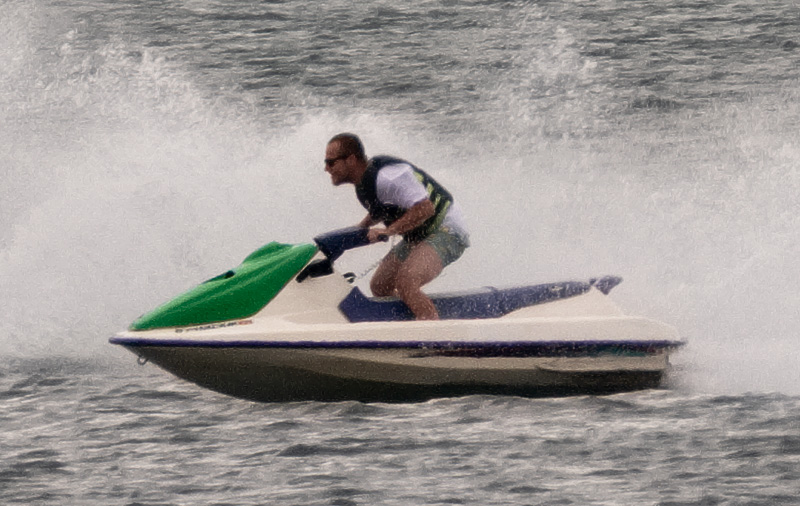
Detail
That's amazing to me; here the zoom is racked out all the way to 400mm/600m-e, and I'm hand-holding it—poorly—and the shutter speed is only 1/450th. I'm sure an experienced birder could do better—this is a little sfumato—but as I shot this, the image was jouncing around in the viewfinder so badly that I had trouble framing the shot! That I got anything close to a sharp result seems like a modern miracle.
As an aside, you can certainly spy on people with this lens. I captured expressions on the faces of people who were so far away they were oblivious I was there. Like, the length of a football field away. Again, this is all kinda new to me. (Here's an ethical question. Mennonites don't like having their picture taken, but the reason is modesty—they consider it prideful to be the object of attention from others. Would you say it's ethical to take pictures of them if you're so far away they don't know you're doing it? What would you do?)
And finally, here's a test shot from later in the evening. From across my family room, I did some test shots of my handy high-tech grid target at 400mm/600mm-e, but with the shutter speed all the way down to 1/20th. To say I could not hold this steady by myself is an understatement—the image in the viewfinder was bouncing around like Pooh's friend Tigger. Here's the result:
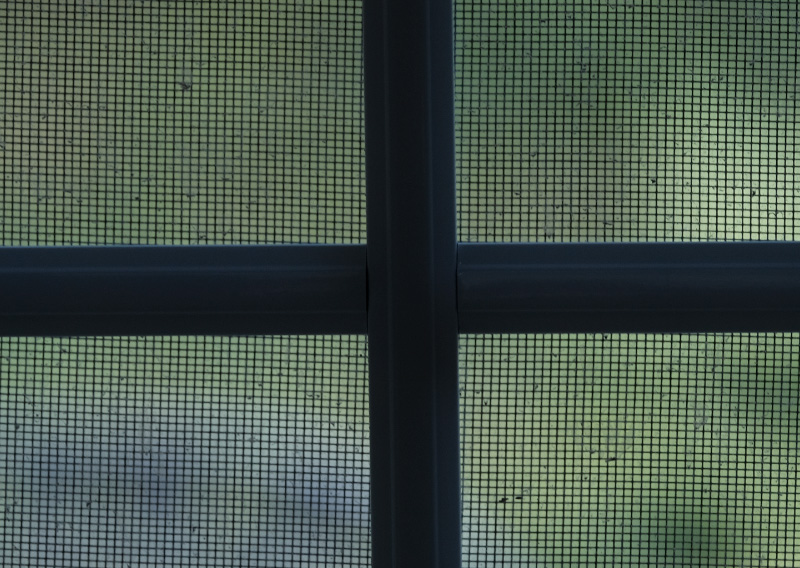
And that's not the full frame, either—that's a center detail! (Again, it should be 100% for you after you open it by clicking on it.)
Are you kidding me? A lens that long, handheld, at a twentieth of a second?!? That's magic, that's what that is. And I got this result over and over again. (I had to keep trying it because I couldn't believe it.)
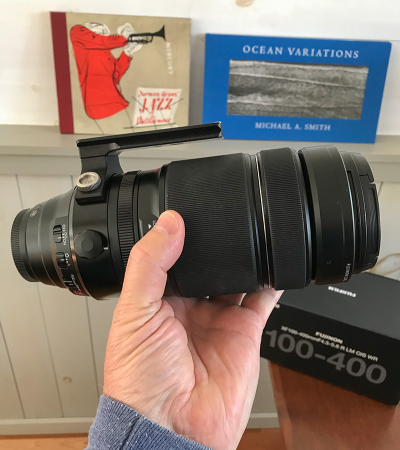 Magic Fuji XF 100–400mm showing aftermarket foot AKA carrying handle
Magic Fuji XF 100–400mm showing aftermarket foot AKA carrying handle
By the way, the lens was not a pain to carry. The previous owner replaced the OEM foot, which is (obviously) removable, with a Hejnar Arca-type low-profile aftermarket tripod foot, so I just used that as a handle to carry lens and camera. It was quite comfortable walking around with it as long as I had it in my hand.
Of course I was basically working out of the car. As we all know, with heavy cameras there are no pictures more than 300 steps away from your car.
Word to the wise, though—never go out armed with only a supertelephoto zoom! When the sun and clouds are dramatic in the Finger Lakes they are very dramatic, and once I got into the "head" of looking for pictures I saw lots and lots of them, and I lost a lot of opportunities on account of not having a plain-jane 50mm-e or 35mm-e riding shotgun.
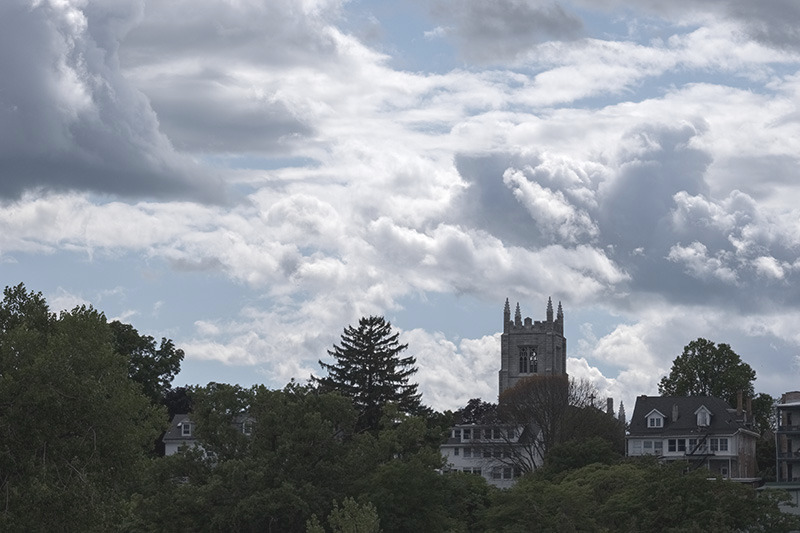
Cool stuff going on in the atmosphere—it's a show. I resisted the
temptation to hype this up with the sliders—this is how it looked.
On the other hand, that's my duty—I know myself. If I had had a shorter lens along, I would have spent two-thirds of my time shooting with that and I wouldn't have gotten to grips with the 100–400mm very well.
As it is, I had a blast. It was a beautiful day to be outside, and I enjoyed the challenge of stepping "outside" in another way—outside my comfort zone, that would be. I drained the one battery I had along (I suspect the long lens sucks a fair amount more battery power than a small prime does?) and was forced to quit and drive home because I was out of power.
Two thoughts about that. It has never occurred to me before, but that's an advantage of an optical viewfinder—you can keep framing pictures even with the camera turned off. As my battery was nearing its end, I kept switching off the camera to conserve the juice, and then I couldn't experiment with framing. (You can tell I don't usually drain batteries when I'm out and about.)
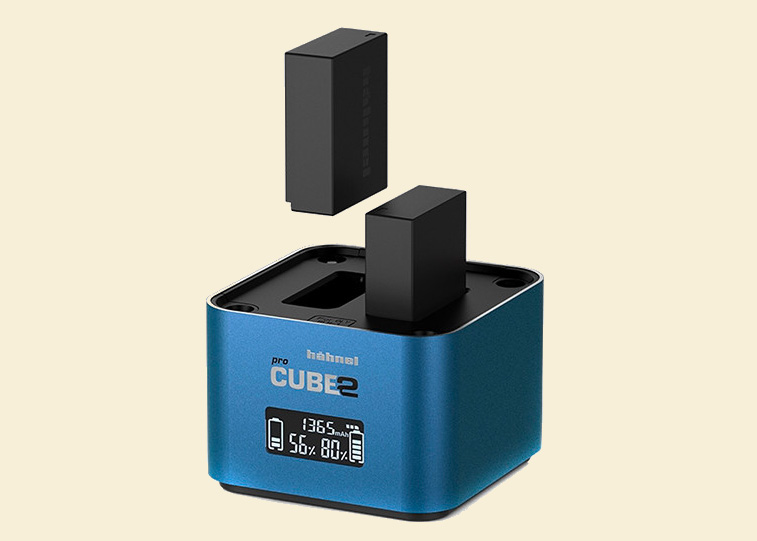
Hähnel ProCube2 dual-battery charger
The other thing I wanted to mention under this heading is that I inherited this Hähnel ProCube2 dual battery charger for selected Fuji and Panasonic batteries, and it's really nice. It charges one or two batteries in less than an hour, and it displays the percentage of charge clearly on the front readout as you go. They make them for Nikon, Canon, Olympus and Sony as well, and apparently they're popular because Hähnel is having trouble keeping them in stock. Check to make sure they fit your specific batteries. (There's also a clip-on plate that goes on top that charges four rechargeable AA's.) Nice accessory, one I'm glad to know about.
Honestly, though, you don't need a charger with this particular camera, because the battery grip, which now comes with this camera for a quite low bargain price, is itself a battery charger. Load two batteries into it and plug it in to an outlet via its included cable and you'll be good to go. The camera also comes with the usual single-battery charger in the box. The kit also comes with three batteries, which go for $65.79 each when purchased separately. You do get quite a lot for your money with this Fuji...it was a deluxe product just a year and a half ago at the intro MSRP of $2,199 for the kit with the camera and battery grip, but to get both camera and grip for the current price of just $1,299 really is just a screaming bargain. I know I keep saying that, but really.
Note to self: remember to attach the battery grip when using the 100–400mm.
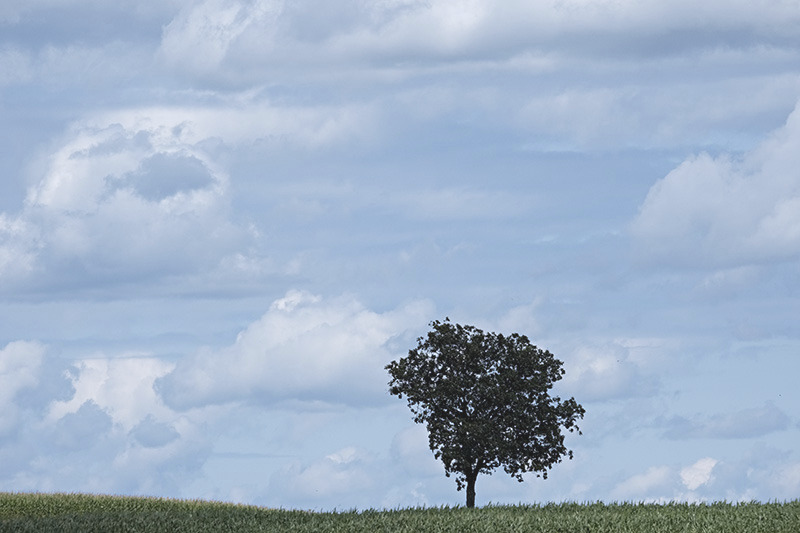
I would never have bought this lens for myself in this lifetime, so it's great to have the opportunity to get some experience with it. It is, er, expanding my horizons. I'm sure than an XF 55–200mm (84–305mm-e) would be much more useful to me personally in terms of reach 'n' range. But it wouldn't get me outside my comfort zone. And would the OIS on that work as well? Ah, there's always something yet to test.
Mike
(Thanks to JB)
*By the way, did you know that Canon's "EOS" originally stood for "Entirely Organic System"? This is true, I'm not joking. Only subsequently in its development was the meaning of the initials changed to "Electro Optical System."
**A once-famous lens type, dating back to Zeiss's renowned "Olympia Sonnar" that was rushed to completion for the 1936 Berlin Games. Nikon still makes a 180mm ƒ/2.8 although the lens type has long been eclipsed by standard tele zooms such as the Nikkor 80–200mm ƒ/2.8D. Every manufacturer makes its own version; the equivalent lens in the Fuji XF lineup is the XF 50–140mm ƒ/2.8 (76–213mm-e), which by the way is considerably more expensive than the full-frame Nikon FX (full-frame DSLR) or Canon DSLR equivalents.
***The Greater Chicago Metropolitan Area. It goes on forever, and once you get out far enough it all starts to look the same—all kind of closed-in with a scarcity of vantage points and vistas. And nope, you can easily be far enough away from them that you can't see the skyscrapers of downtown. There are more people in Chicagoland than there are in the States of Wisconsin and Iowa combined.
Original contents copyright 2019 by Michael C. Johnston and/or the bylined author. All Rights Reserved. Links in this post may be to our affiliates; sales through affiliate links may benefit this site.
Amazon.com • Amazon UK • Amazon Canada
Amazon Germany • B&H Photo • Adorama
(To see all the comments, click on the "Comments" link below.)
Featured Comments from:
Dan Gorman (partial comment): "I've lived pretty much all my life in and around Chicago, and I can attest that very long lenses aren't much use around here for anything besides sports, birding, and spying on your neighbors. I never gave it much thought, but maybe that's why I was never drawn to them. In addition to the attributes you mentioned at the '***' footnote, the landscape is mostly very flat, and the few hills we have (yes, there are some, especially southwest of the city) are heavily forested, which makes vistas like the one in your first image in this post vanishingly rare. In the summer the air tends to be hazy; in the winter, the skies tend to be a leaden gray. Unless you have ready access to a high-rise (like Ken Tanaka, for example), Chicago is definitely not a landscape shooter's paradise. On the other hand, if you like architecture or street portraiture, you've got subject matter to last a lifetime. :-)
"Glad to hear you're having fun 'outside.'"
Eamon Hickey: "Mike, I believe you must be pulling our legs with 'Entirely Organic System,' no?
"But for the record, just in case: in more than 30 years in and out of the camera and camera media industries, I've never heard that. And I have known many folks at Canon whose histories go back that far.
"Also it sounds really, really implausible to my ear, for reasons I won't belabor here, since I suspect my leg is being pulled."
Mike replies: Not pulling your leg; that was the development name. I got a lot of insider info fed to me when I wrote "The EOS Revolution" in 1991 or so. Take a look at the Canon Camera Museum History Hall, "The EOS System 30th Anniversary Interviews: Developers Look Back on the History of the EOS System – Part 1," paragraph one.
Eamon: "Okay, well, that's a good source, so I guess I have no choice but to stand corrected. I'll only say that this is the third different story I've seen in official Canon literature. I wonder what 'entirely organic system' is supposed to mean? Too bad they gave up on the adverb of degree, or we could have the Entirely Electro-Optical System, or maybe the Mostly Electro-Optical System or the Partially Electro-Optical System—the PEOS! If only they'd had me to help them in their naming meetings...."
Mike: Well, you might remember some of my early thoughts about Canon camera naming. (And I wonder why Canon doesn't like me....)
Ned Bunnell adds: "Having worked at Canon, I think a slight clarification is needed on the history of the phrase 'entirely organic system.' As many companies do, this was the internal code name for the project. It’s meaning which I was told really didn’t translate well into English was meant to support the goal of the engineers in developing a systematic coordination of components or, if my memory is still good, an organized organic whole ecosystem. It was never intended to be used as an external or marketing name."
Martin D: "Delighted to see how this unexpected lens gift allows you to explore new ways of seeing."
Kristine Hinrichs: "A hint if you plan to be out and about with that lens. With my Olympus 40–150mm Pro I rotated the tripod mount to about the 10 o’clock position. That allows me to slip my hand between the mount and lens, increasing the stability markedly."
Mike replies: Good tip. However, the attachments for the foot on the 100-400mm are two threaded screws, so it's not possible to rotate it. As a carrying handle, the non-low-profile Hejnar foot might work better. [CORRECTION: I'm wrong! The threaded screws attach to a locking collar which allows you to rotate the position of the tripod mount. Good reviewer's rule, which I just violated: always have the actual product at your elbow when you say something about it, and don't go by memory...even if the lens is just in the other room. Thanks to Bob Johnston (no immediate relation) for setting this straight.]










